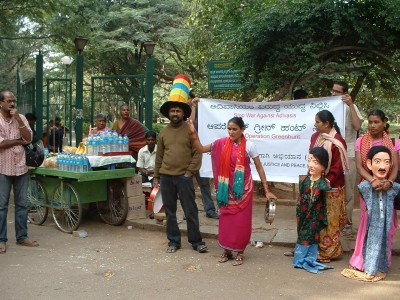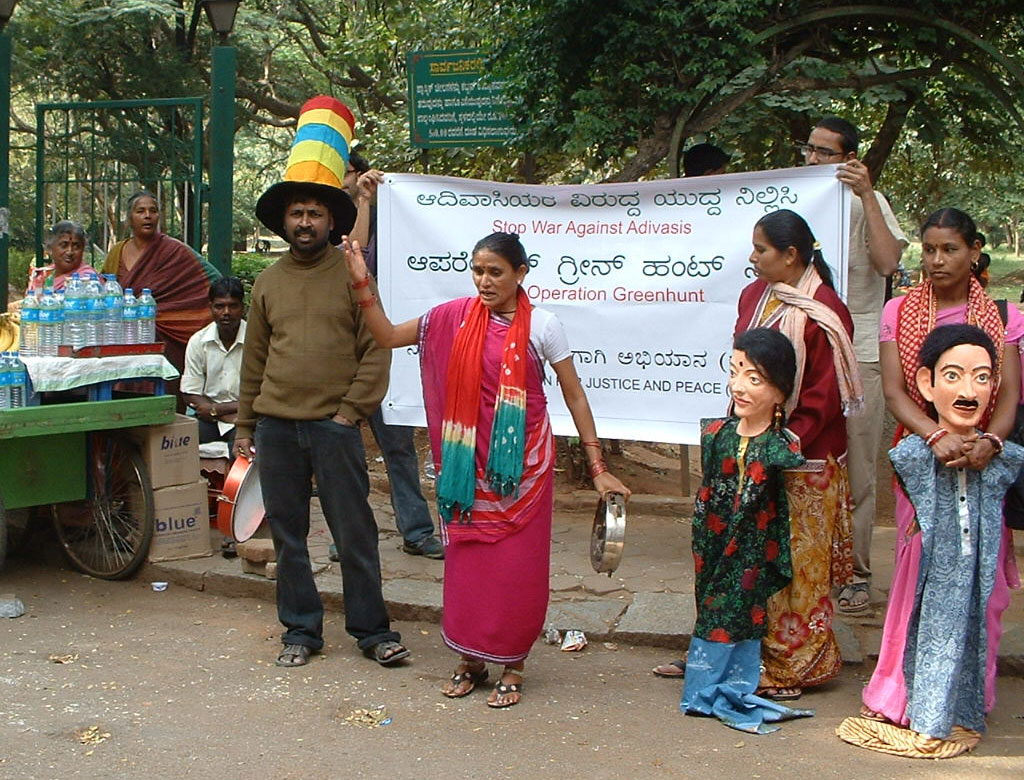Notwithstanding the fact that all countries have ministries of culture, promotion of cultural performances in developing countries has taken a backseat since other areas have been seen as priority issues for development: eradication of poverty, provision of water, health and education. However, recent international policy has brought back into focus the importance of protecting cultural expressions. The UNESCO Convention on Cultural Diversity 2005 was an important step in this direction in foregrounding cultural practices as markers of community identity and cultural diversity, and central to one’s life as it were.
The UNCTAD’s Creative Economy Report 2008, in addition to national policies in countries such as the UK, Australia and India, has taken a step further by arguing that promoting cultural expressions does not merely enable diversity but is at the heart, rather than the cost, of development. The policies present the future economy as not an industrial economy but a creative one. That is, unlike an earlier period where commodity manufacture centrally contributed to a country’s GDP, future growth is said to lie in creativity and innovation. Notwithstanding the genuine threat of cultural practice being subsumed within a larger paradigm of national development, the fact of uneven economic value of different cultural productions and the possible exclusion of certain cultural practices within the developmental model of creative economy, can civil society actors still strategically draw on national and international policy to argue for state and private funding for culture on the basis that creativity underlies development? At a time when funding for the cultural sector is becoming scarce and indigenous cultural practices are confronted with the threat of extinction, would such a strategy be necessary? Would it be productive? Can marginal cultural practices/practitioners find a place within this developmental model?
These are some of the questions that animate an action-research project, or what we call a translational-research project, undertaken by ‘Culture: Industries and Diversity in Asia’ Research Programme at the Centre for the Study of Culture and Society, Bangalore (India) in partnership with Maraa, a media collective from Bangalore interested in the issue of, among others, art and culture in public spaces. Specifically, the project initiates efforts towards the creation of public cultural spaces in the city of Bangalore, both physical spaces and a public discourse of the need to nurture indigenous cultural performances, through mobilising support from public and corporate bodies. The attempt is to ensure the protection of endangered folk forms through not museumization but widespread dispersal and further, to secure livelihoods of cultural performers through the marketing of folk music among the public.
What do pavements have to do with an initiative arguing for the protection of public cultural spaces? The connection is that streets and pavements in countries like India have been important spaces for cultural-political performances, especially by and representing marginal groups who do not figure in the new imaginations of Indian cities poised to be global metropolises. Street theatre, street singing as a means for showcasing a political issue or for livelihood are not uncommon sights in urban India. In fact it is part of the history and culture of cities.
Though these performers/performances cannot strictly be mapped onto those I discussed earlier, the crucial link lies in the shrinking of public spaces for cultural-political performances and the threat that these marginal performers face within new ideas of urban development. Streets are being widened to accommodate the growing motor traffic, with pavements thinning and almost disappearing. Further, the city is being ‘cleansed’ of cultural-political performances that are now seen as unfit within its new imaginings. I ask then whether we can use the site of the pavement to address the issues of nurturing cultural-political performances as well as protecting public places that have served as the site for such performances, issues important in building a democratic imagination of development, of urban development.
About the Author
P. Radhika, Associate Fellow, Centre for the Study of Culture and Society, Bangalore, India.

A cultural-political performance by Jurmil Morcha, an activist and folk-artist group from Chattisgarh, Central India voicing the issue of displacement of tribals and protection of forests being cleared for industry.
————————
International Summer School of Arts and Sciences for Sustainability in Social Transformation
This article is part of a series of articles published in preparation for the 1st International Summer School of Arts and Sciences for Sustainability in Social Transformation (ASSiST ) that will take place in Gabrovo, Bulgaria, from August 21st to 27th 2010. The theme of the 1st edition ASSiST is: „Walking and Places: Building Transformations.“

Eine Antwort zu “Diminishing Spaces for Cultural Performances”
[…] cultural significance of legal issues around the uses of pavements in the city of Bangalore (see Rhadika’s article in the webmagazine of Cultura21 and her workshop blog on the ASSiST website). There were also […]